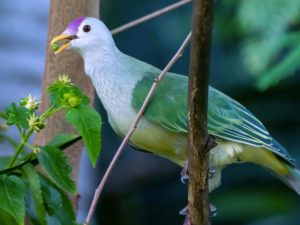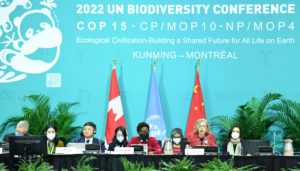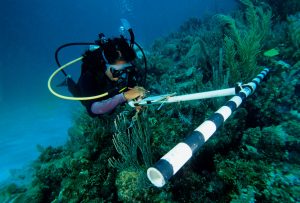Just eight months after new global biodiversity targets were agreed at the COP15 talks in Montreal, a new nature fund has been created.
The fund was a key demand of developing nations at the talks. Though campaigners have hailed the speed of its establishment, rich countries have not matched this sense of urgency with donations.
The Kunming-Montreal Global Biodiversity Framework that came out of COP15 committed governments to new goals on conserving, restoring, and sustainably using biodiversity and ecosystems by 2030.
But many of the most biodiverse countries in the world are also some of the poorest. The framework therefore includes a target for countries to mobilise at least US$200 billion per year by 2030 for biodiversity from both public and private sources, with developed countries providing developing ones with at least US$20 billion per year by 2025, and $30 billion by 2030.
The new fund, known as the Global Biodiversity Framework Fund, will be managed by the UN’s Global Environment Facility (GEF), which was created in 1992 to enable developing countries to take action on urgent environmental challenges. It already manages funds for other international environmental treaties, including the UN climate change convention.
The fund was first approved by the GEF’s governing board in June, and then by government environment and finance ministers at the GEF assembly in August.
Its mechanics were agreed at an “impressive” pace, according to Brian O’Donnell, director of Campaign for Nature. Such funds typically take years to agree and set up, he said, citing the GEF’s Green Climate Fund as an example. “You miss the opportunity to actually spend the money because all the time is focused on the development of the fund,” he says.
However, the fund is not yet able to disburse money as donations from governments so far do not meet the US$200 million stipulated by World Bank rules. The government of Canada pledged CAN$200 million (US$147 million), while the UK donated £10 million (US$12.5 million), which nature minister Trudy Harrison said was an “initial contribution”.
Georgina Chandler, senior international policy officer at the RSPB, says the fact that only two countries have donated to the fund was “disappointing”. She added: “I’m sure the gap will be made up and it will be operational, but it would have been nice to have more developed countries come forward with money.”
The lack of donors so far was likely down to national budgetary cycles, she says. “The fund was established quite quickly, which didn’t give countries much time to release funding.”
Though there are indications that the fund will achieve $200 million by the end of the year, O’Donnell is concerned. “$200 million is still just a very small amount compared to what is needed – wealthy nations need to pay at least $20 billion a year of international finance to developing nations by 2025, which is effectively a doubling of current international biodiversity finance.”
Clearly, not all biodiversity finance will be channelled through the new fund, but the lack of support so far reveals the huge gap that needs to be filled, he adds.
Citing budgetary cycles as a reason for not committing money was just an “excuse to avoid paying for the responsibility for the global emergency,” he says. “The Global Biodiversity Framework was supposed to start in 2020, and leading up to that, developing countries were asking for $100 billion a year. So the fact that there was going to be a need for additional international finance for biodiversity should be a surprise to no one,” he says.
The fund has been specifically designed to avoid problems experienced by the Green Climate Fund, which has been criticised for being very slow, and difficult to access for the poorest countries, and frontline communities and Indigenous peoples.
The approval of the fund, with a specific commitment to Indigenous Peoples and local communities, motivates and gives us hopeLucy Mulenkei, co-chair of the International Indigenous Forum on Biodiversity (IIFB)
The GEF has agreed that up to 20% of the fund should be targeted at conservation projects by Indigenous and local communities, while at least 36% should support small island developing states and least developed countries.
Though these are aspirational targets, they have been welcomed by environmental campaigners and Indigenous peoples. Lucy Mulenkei, co-chair of the International Indigenous Forum on Biodiversity (IIFB) calls the creation of the fund “historic”. “The approval of this trust fund, with a specific commitment to Indigenous Peoples and local communities, motivates and gives us hope that support will be achieved for efforts to conserve biodiversity at local level,” she says.
According to Dr Andrew Deutz, managing director of global policy and conservation finance at The Nature Conservancy, the GEF will streamline the funding approval process from around 19 months to 12 by removing the need for applications to be rubber-stamped by both the GEF Council and its chief executive officer. Once a project concept is signed off by the secretariat, only the council need to formally agree to it, he says.
“Hopefully we end up with a shorter process and we get good results so that donors continue to be comfortable with the process,” he says.
It is less clear how finance for local communities and Indigenous peoples will be managed, Deutz says. Funding could either be disbursed through multilateral development banks, or the UN Development Programme, which has a track record of running a small grants programme, he suggests.
The new fund also differs from others the GEF manages in that it has been designed to draw in capital from the private sector, and philanthropic organisations alongside that from governments. However, there was scepticism about how much finance would come from these sources.
O’Donnell believes that voluntary private financing of the Global Biodiversity Framework is a myth. “It’s convenient for governments to try to pass the responsibility off to the private sector, but the only way the private sector will truly fund biodiversity is if it’s required to. Governments either have to put the money up themselves, or create a legal and financial framework that requires or incentivises the private sector to do it.”
Businesses who contribute to such funds are “a very, very small percentage”, he says. “The fact that this fund can accept private contributions doesn’t mean that we will see a line of corporations with cheques waiting at the door to give money to the Global Biodiversity Framework.”
Similarly, philanthropies are more likely to co-finance projects through the GEF, rather than donate directly to the new fund, as that gives them the ability to determine independently where their money ends up, he says.
Deutz anticipates that the GEF will encourage philanthropies to align their funding with its own by way of specific programmes, such as the Blue Nature Alliance, under which GEF funding was matched by several foundations to create a pool of money for ocean conservation.
“The GEF has a pretty good track record of partnering with philanthropy around this type of initiative, so we might see more examples where it can be part of the governance with large philanthropic providers to get big things done in important places,” he says.
Under the Global Biodiversity Framework, countries also agreed to phase out or reform subsidies that harm nature, which a major 2021 study predicted could significantly close the biodiversity funding gap. But little discussion has so far taken place on this issue since Montreal, according to commentators. “Progress has been slow on the two most important fronts for financing biodiversity: reducing the costs by eliminating harmful subsidies, and increasing public financial flows. Those are going to have to be addressed with urgency in the very near term if we’re to meet the goals of the framework,” says O’Donnell.
The Global Biodiversity Framework Fund is separate to the 1.5 billion yuan (US$206 million) Kunming Biodiversity Fund to support biodiversity in developing countries that was announced at the first part of the COP15 talks, held in China in 2021. No further details of how this fund will work, and whether it will interact with the framework fund, have been released.
Several social organisations in China have followed up, including the China Biodiversity Conservation and Green Development Foundation (CBCGDF), which donated 1 million yuan (US$137,000) to support the fund, and established a public fundraising platform.
In a report published in December 2022, Greenovation Hub, a Beijing-based think-tank, suggested that the government pursue diversified funding sources rather than huge single funds. It also recommended that the fund should be based on government financial contributions, with the private sector encouraged to contribute and experiment with crowdfunding.
The next biodiversity COP is scheduled for December 2024. In the intervening period, countries are working on updating their National Biodiversity Strategies and Action Plans (NBSAPs) to align with the new targets agreed in Montreal. Nature and biodiversity will also be discussed at upcoming events on the climate change calendar, including the New York climate summit, the UN General Assembly, and climate COP28 in Dubai.
A host country for biodiversity COP16 is still to be decided since Turkey withdrew, citing difficulties following the devastating earthquake it suffered in February 2023. A replacement presidency is expected to be decided in the northern hemisphere’s autumn.
“At the moment, there is no host government to engage with, which leaves us in a weird space politically. It would be really great to have clarity on the presidency sooner rather than later so they can engage with the UNFCCC and start setting their agenda as a presidency – it would be really helpful for maintaining momentum,” said Georgina Chandler of the RSPB.









